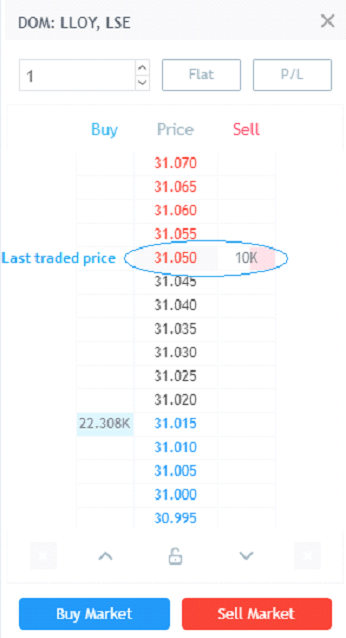What Is LTP in the Stock Market?
Contents
LTP in the stock market is an abbreviation for Last Traded Price. The Last Traded Price is the last recorded price at which a security such as a stock was successfully traded between a buyer and a seller or between the dealer and the trader. The trader could be a buyer or a seller, depending on whether the trade in question involved the purchase of shares by the trader or the sale of any such shares by the trader.
Many people mistake the closing price of an asset to be the last traded price, but this is not accurate, especially in the stock market. In this article, an attempt will be made to shed some light on what the concept of the LTP or Last Traded Price is all about.
What is LTP and Why Is It Relevant to the Stock Market?
The LTP or Last Traded Price, refers to the last price that was quoted for the asset on which a completed trade occurred. Therefore, the last traded price is not the price that is currently being viewed at the present time, nor is it the last price that was displayed in the stock ticker. It is the price at which the asset was sold to a buying trader by a dealer or the price at which the dealer bought an asset from a selling trader.
So by definition, only a record of transactions that have occurred can provide the information on the last traded price. This record is usually the Depth of Market tool, which displays the number of assets that changed hands, the price at which they changed hands (bid and ask price) as well as the time of the trade. The time is important, or else how would you know from a cluster of trades which one was traded last out of them all?
Here is an example of an order book (Depth of Market tool) showing a range of bid and ask prices as well as the last traded price, where you can see a particular number of units of the asset was actually traded.

Here is the Depth of Market tool for Lloyds Banking Group’s stock. Here we can see a range of prices, and beside two prices in particular, we see that orders have been placed. There was a buy order for 22,308 shares at 31.015, and there was a sell order for 10,000 units at 31.050. The market price as at the time this snapshot was taken was 31.07. This indicates that the last traded price for this asset was 31.05. The chart for this stock also indicates that prices were trending upwards.
Why is the LTP Different from a Stock’s Closing Price?
Ordinarily, it is assumed that the last price a stock traded before the market closed should be the last traded price. However, the concept of after-hours and premarket trading has changed all that. It is possible for a stock to continue trading even after the market has closed. This is known as after-hours trading and it was introduced in 1991. After hours trading takes place for four hours after the market must have closed. After hours trading allows a selected few in the market participation tool to buy or sell stocks, but usually at a higher spread and also with reduced volume. Due to the fact that there is a demand-supply pull on the stock at this time which is also influenced by low volumes and illiquid trade conditions, prices tend to change at this time. So a trader who saw a stock close at the end of the normal trading session on one day, can come into the market and see a whole new price the next day.
After hours trading can also give way to premarket trading before the stock exchange opens for the day’s business. It lasts for four and a half hours and merges with the market open. The same thing happens here: wider spreads and low volume trading can tweak prices.
During the earnings season, earnings reports are usually released in the premarket and after hours trading hours. The last traded price which the trader sees on the computer may not be the price at which the stock or asset last closed. So the consideration of the closing price from the previous day as the last trading price is not correct.
Uses of the Last Traded Price
Perhaps the most significant use of the last traded price is for the trader to know if the value of the stock is actually rising or not. For instance, if a chain of last traded prices are picked from the order book and the information shows that the value of the last traded prices are increasing, this could be a sign that the value of the stock could be rising. In the same vein, if there is a declining set of last traded price values, then it means that the price at which buyers and sellers are prepared to deal are falling.
Usually, the trade volume (i.e. the number of units of the stock asset that are changing hands in trade deals) are a big element used in determining the last traded price. Skilled traders can therefore use the volume information as well as the LTP to decide whether to go long or go short.
Then there are traders who also use this information to trade the gaps that show up on stock market charts. Usually, after hours and premarket trading produce a variation in price between the closing price of the previous day and the opening price of the next general trading session. By looking at the last traded price of the stock, the trader can determine if a gap will form to the upside or the downside. When this gap appears on the charts, traders who place positions that mirror gap closing price movements can operate the strategy with better efficiency.
So that’s what you need to know about the Last Traded Price (LTP).
Recommended Financial Products
Full list of recommended Stock Brokers
Suggested For You
Most Popular Articles
Featured Reviews




